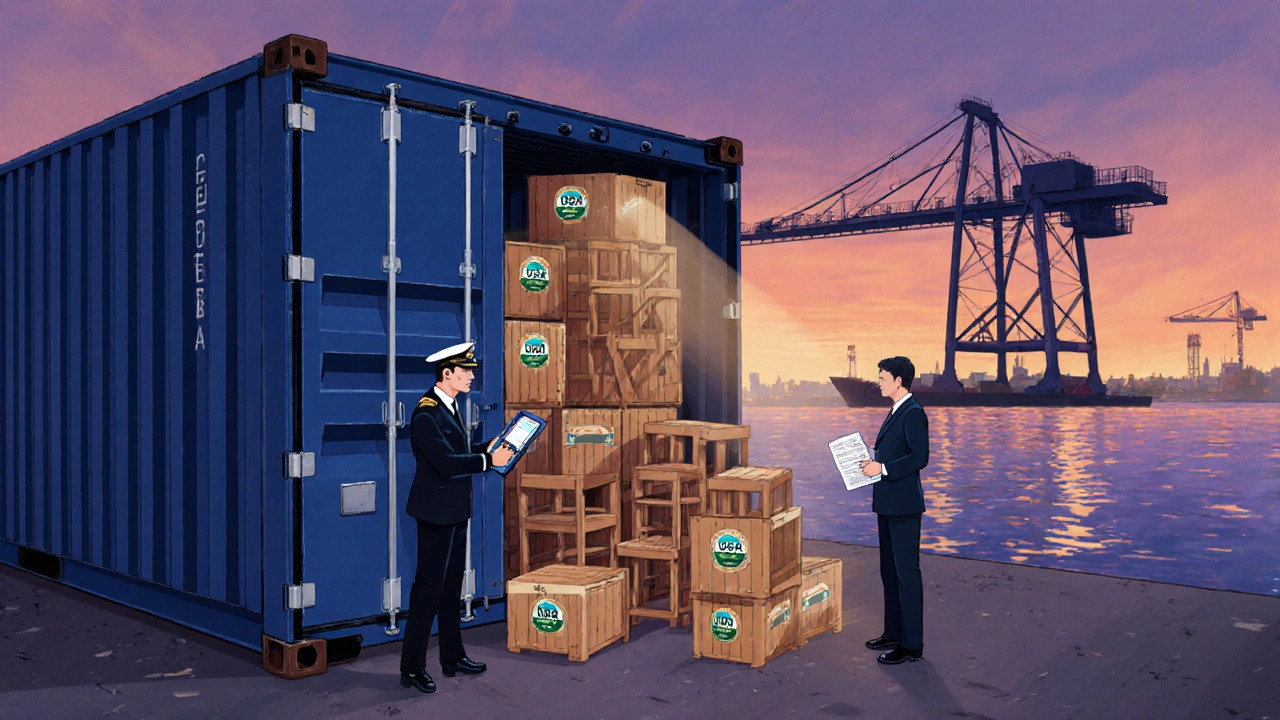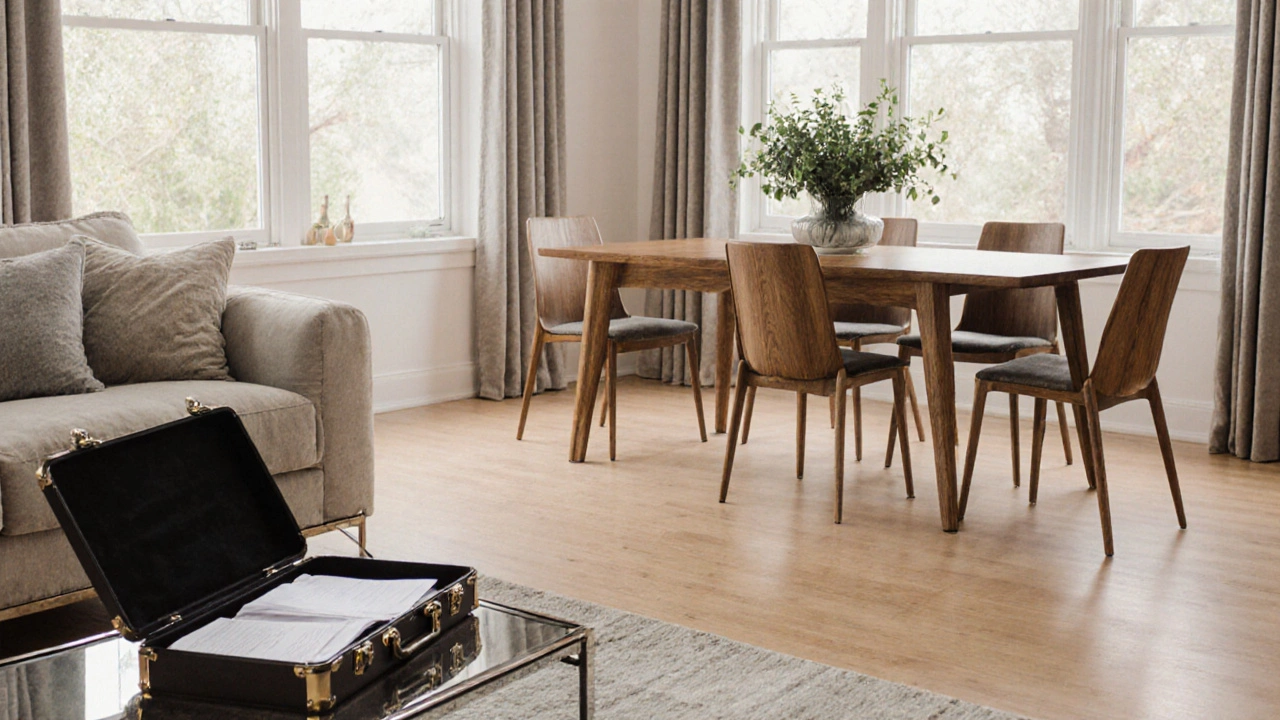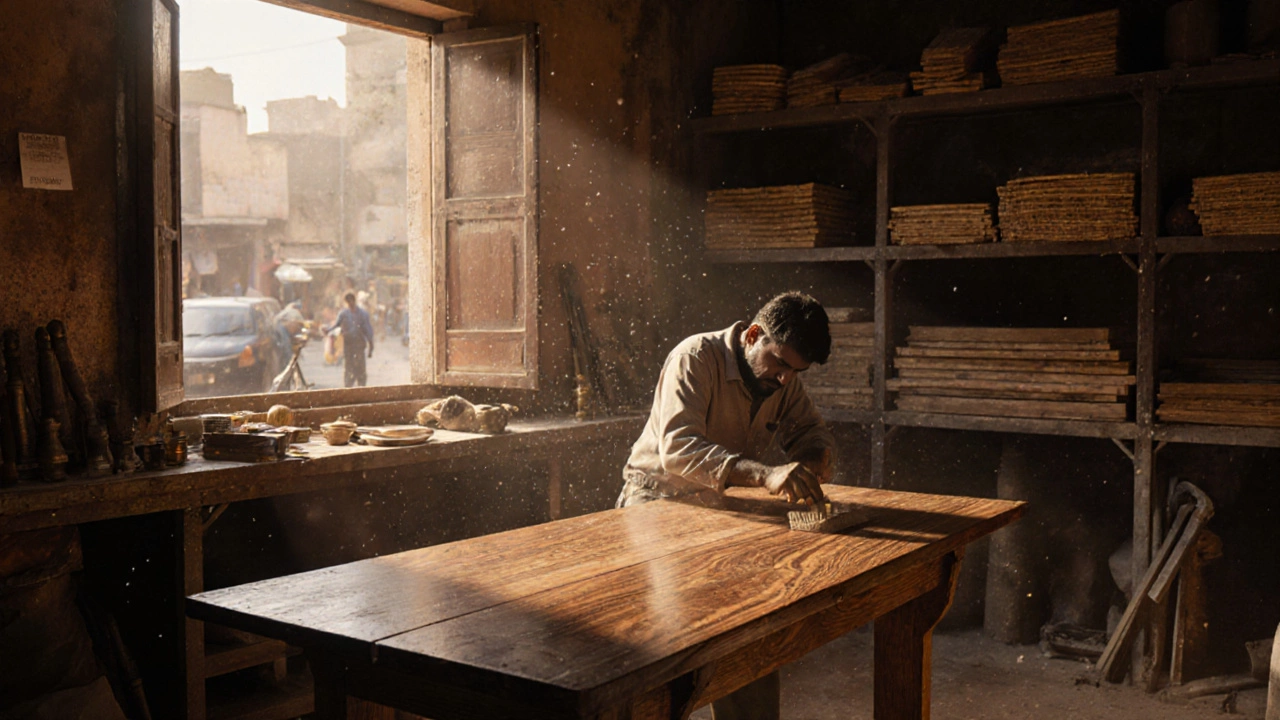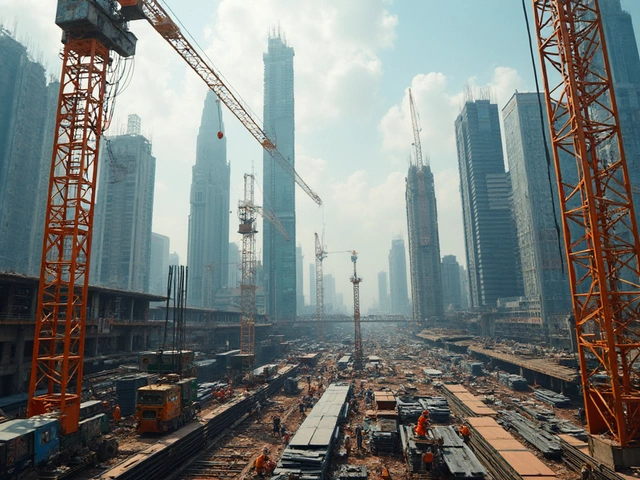Furniture Import Cost Calculator
Thinking about sending a handcrafted teak table or a set of Indian sofas to your new home in the United States? It’s totally doable, but you need to know the paperwork, duties, and shipping choices before you pack the boxes. Below is a step‑by‑step guide that walks you through everything from classification codes to quarantine rules, so you can ship with confidence.
Key Takeaways
- U.S. Customs classifies furniture under specific HTS codes that determine duty rates.
- Typical import duty ranges from 0% to 12% depending on material and construction.
- Air freight is fast but pricey; sea freight is economical for bulk shipments.
- Proper documentation - Bill of Lading, Certificate of Origin, and CBP entry forms - prevents delays.
- Some wood species need USDA phytosanitary treatment before clearing customs.
Understanding the Regulatory Landscape
When you bring furniture across borders, two U.S. agencies are the main gatekeepers:
U.S. Customs and Border Protection (CBP) is the federal body that inspects every import, assesses duties, and enforces safety standards. It works closely with the U.S. Department of Agriculture (USDA) to check for wood‑pest issues.
The first thing you’ll need is the correct Harmonized Tariff Schedule (HTS) code. Furniture is grouped under Chapter 94, but each material - wood, metal, plastic - has its own 6‑digit sub‑heading. For example, a solid wood dining table typically falls under HTS 9403.20.
Calculating Import Duty and Taxes
Once you have the HTS code, you can look up the duty rate. Most solid‑wood furniture enjoys a 0% - 5% duty, while metal frames can climb to 12%. Keep in mind that the duty is calculated on the customs value (price you paid plus insurance and freight). Add a 2.5% Merchandise Processing Fee (MPF) and, if applicable, a 0.4% Harbor Maintenance Fee for sea shipments.
Here’s a quick formula you can use:
Duty = Customs Value × Duty Rate Total Tax = Duty + MPF + Harbor Fee (if sea)
For a $2,000 teak table shipped by sea (duty 5%):
Duty = $2,000 × 0.05 = $100 MPF = $2,000 × 0.025 = $50 Harbor Fee (≈$10) → Total ≈ $160
Knowing these numbers ahead of time stops unpleasant surprises at the port.

Choosing the Right Shipping Method
Shipping costs dominate the overall expense, so match the method to your volume and timeline.
| Attribute | Air Freight | Sea Freight |
|---|---|---|
| Transit Time | 3‑7 days | 25‑45 days |
| Cost per CBM | $150‑$250 | $30‑$60 |
| Weight Limit | Up to 150kg per pallet | No practical limit |
| Risk of Damage | Low (short handling) | Medium (multiple transfers) |
| Ideal For | Small‑batch, high‑value pieces | Bulk orders, bulkier items |
If you’re moving a single sofa, air freight saves you weeks of waiting and reduces handling. For a full‑house shipment, sea freight cuts costs dramatically, even after adding port fees.
Preparing Your Shipment: Documentation Checklist
Missing paperwork is the number‑one cause of customs holds. Here’s a concise list you should hand to your freight forwarder:
- Commercial Invoice - details of the seller, buyer, description, HS code, unit price, and total value.
- Packing List - dimensions, weight, and how items are packed.
- Bill of Lading (B/L) - the transport contract. Bill of Lading serves as both receipt and title document for the cargo.
- Certificate of Origin - proves the goods were manufactured in India. Some duty reductions require this.
- Phytosanitary Certificate - if any wood components are subject to USDA inspection, you’ll need a treatment declaration and a certificate from an accredited Indian agency.
- Entry Summary (CBP Form 7501) - filed by your customs broker after the goods arrive.
Partnering with a reputable Freight Forwarder can help you gather and submit these forms correctly.
Dealing with Quarantine and Wood‑Pest Regulations
U.S. law prohibits the import of untreated wood that could harbor pests. Most Indian furniture is made from teak, rosewood, or mango wood. To clear USDA checks, you have two options:
- Heat Treatment (HT) - the wood is heated to 56°C for at least 30 minutes. The treatment stamp must appear on the product.
- Chemical Fumigation - approved methyl bromide or other approved chemicals. A certificate must accompany the shipment.
Even if your supplier claims the furniture is pre‑treated, ask for the treatment certificate and keep it handy for customs.

Hiring a Customs Broker vs. DIY Filing
While it’s legal to file your own entry, a professional broker streamlines the process. Brokers know the exact HTS classification, can claim any applicable duty exemptions, and communicate with CBP on your behalf. Their fees usually range from $150 to $300 per entry, which is a small price for peace of mind.
If you decide to go DIY, you’ll need to register as an importer on the CBP website, obtain an Importer Number (usually your EIN), and master the Electronic Data Interchange (EDI) filing system.
Cost‑Saving Tips and Common Pitfalls
- Consolidate shipments. Combining several pieces into one container reduces per‑item freight.
- Negotiate Incoterms. Choose DAP (Delivered at Place) or DDP (Delivered Duty Paid) to shift responsibilities to the seller if they’re experienced.
- Avoid surprise duties. Verify the exact HTS code early; a mis‑code can bump the rate from 0% to 12%.
- Inspect packaging. Use sturdy, water‑proof crates and label each with the HTS code for faster scanning.
- Plan for storage. If you’re using a port, budget for temporary warehousing; fees can add up quickly.
Step‑by‑Step Timeline
- Identify the exact HTS code for each furniture item.
- Request a Certificate of Origin and, if needed, a phytosanitary certificate from the Indian supplier.
- Choose shipping method (air vs. sea) and obtain a freight quote.
- Hire a Freight Forwarder and, optionally, a customs broker.
- Prepare the commercial invoice, packing list, and Bill of Lading.
- Ship the goods and track the container or airway bill.
- Upon arrival, the broker files the entry summary and pays duties.
- Collect the furniture from the destination port or airport, clear any warehouse fees, and enjoy your new pieces.
Frequently Asked Questions
Do I need a special license to import furniture?
No specific license is required for most household furniture, but you must comply with CBP and USDA regulations, especially regarding wood treatment.
What is the typical cost difference between air and sea freight?
Air freight can cost three to five times more per cubic meter than sea freight. For a 2CBM shipment, expect $300‑$500 by air versus $60‑$120 by sea, not counting duties.
Can I ship assembled furniture?
Yes, but disassembled items pack more efficiently and lower freight rates. If you ship assembled pieces, ensure they’re well‑protected and clearly listed on the invoice.
How long does customs clearance usually take?
With complete documentation, clearance can be under 24hours for air shipments and 2‑5 days for sea containers. Missing certificates can add weeks.
Are there any furniture items that are prohibited?
Furniture containing untreated exotic woods (e.g., ebony, rosewood) or items made from endangered species are restricted under CITES. Always verify compliance before ordering.
With the right paperwork, a clear understanding of duties, and a reliable shipping partner, moving Indian furniture to the United States is a smooth process. Follow the steps above, double‑check every document, and you’ll have your beloved pieces set up in your new home in no time.






